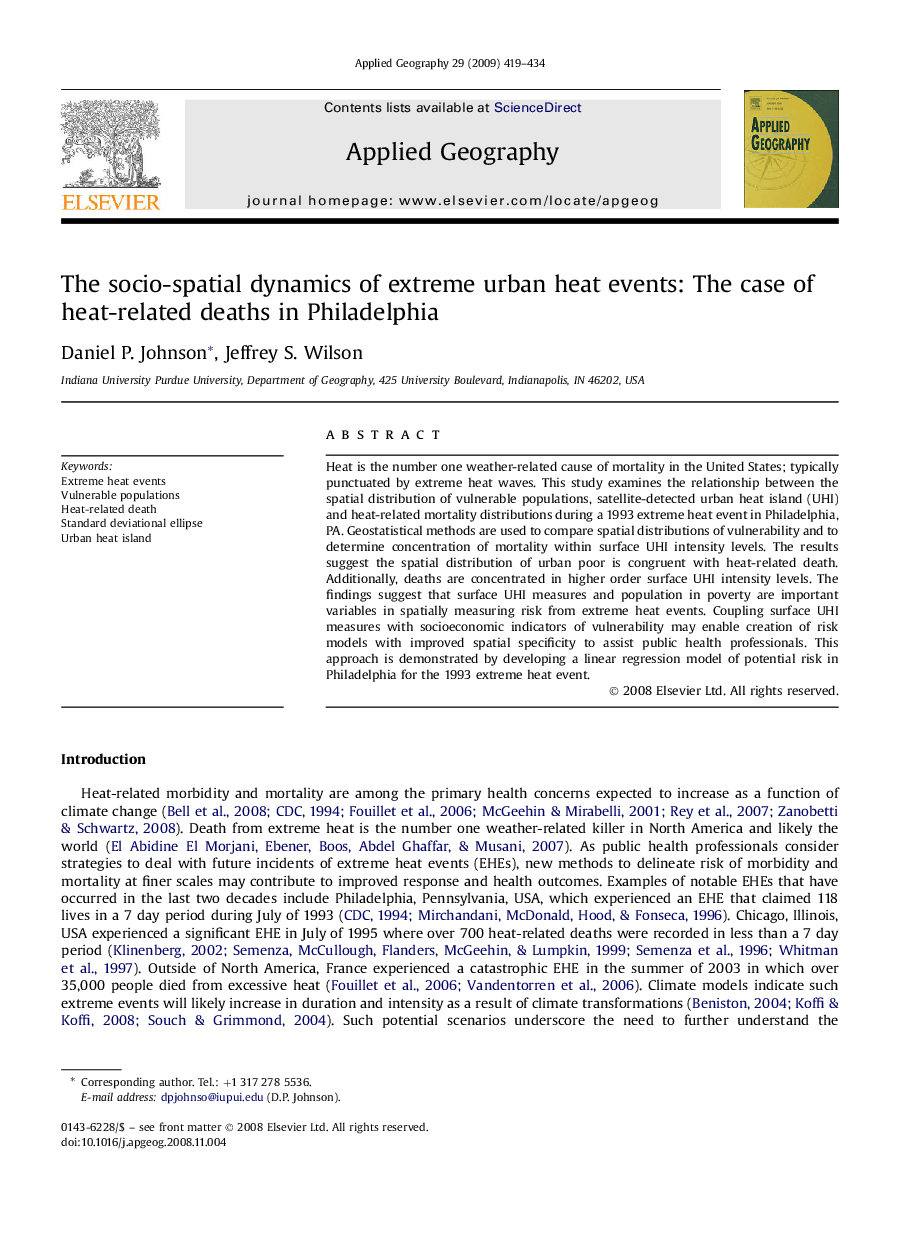| Article ID | Journal | Published Year | Pages | File Type |
|---|---|---|---|---|
| 83894 | Applied Geography | 2009 | 16 Pages |
Heat is the number one weather-related cause of mortality in the United States; typically punctuated by extreme heat waves. This study examines the relationship between the spatial distribution of vulnerable populations, satellite-detected urban heat island (UHI) and heat-related mortality distributions during a 1993 extreme heat event in Philadelphia, PA. Geostatistical methods are used to compare spatial distributions of vulnerability and to determine concentration of mortality within surface UHI intensity levels. The results suggest the spatial distribution of urban poor is congruent with heat-related death. Additionally, deaths are concentrated in higher order surface UHI intensity levels. The findings suggest that surface UHI measures and population in poverty are important variables in spatially measuring risk from extreme heat events. Coupling surface UHI measures with socioeconomic indicators of vulnerability may enable creation of risk models with improved spatial specificity to assist public health professionals. This approach is demonstrated by developing a linear regression model of potential risk in Philadelphia for the 1993 extreme heat event.
